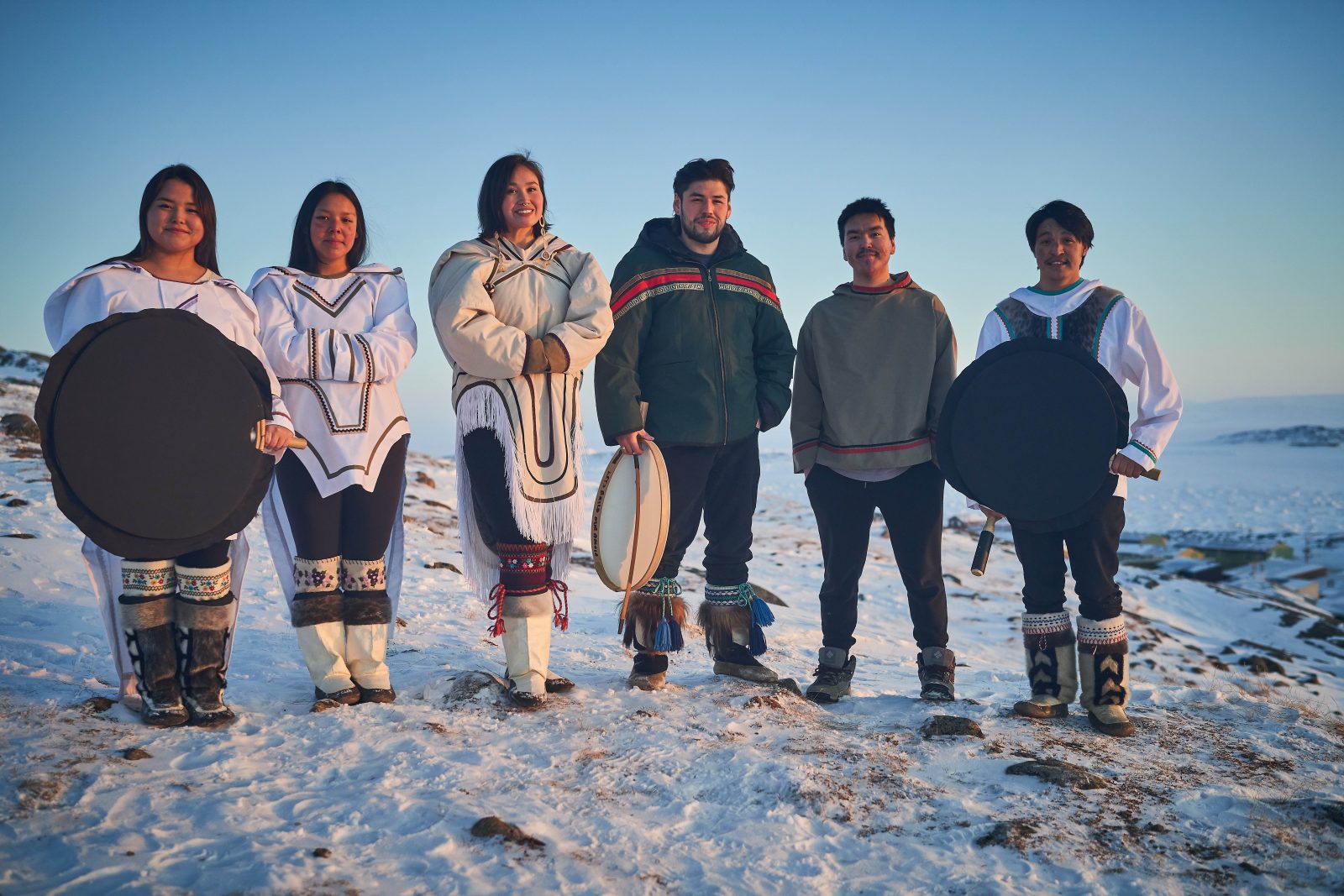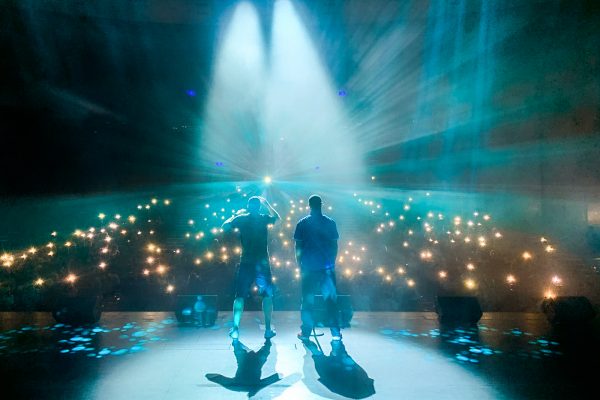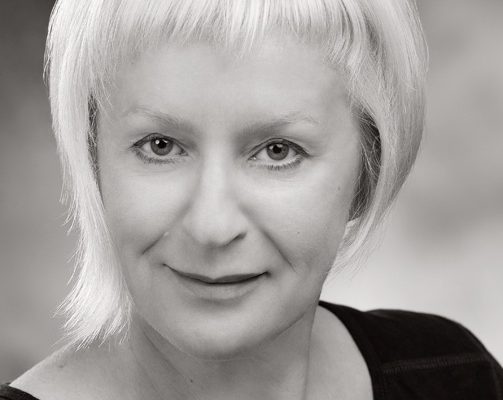This article is published through our Regional Reporter Program. We acknowledge the support of the Canada Council for the Arts through the Digital Now initiative.
In March, a group of seven Nunavummiut travelled to Greenland to take part in the Katuarpalaaq drum dancing festival. The festival, which took place from March 21 to 25 in Nuuk, was organized by a Greenlandic arts and culture organization called Katuaq. It brought together Inuit artist representatives from Canada, Alaska and different parts of Greenland to share knowledge and stories from their respective regions, with the goal of preserving and revitalizing Inuit drum dancing through workshops, conversations and performances.
The Canadian delegation at the event included six young artists from Qaggiavuut, a non-profit cultural organization in Iqaluit, and Sylvia Cloutier, a drum dancer and throat singer originally from Kuujjuaq, Que., who has been living in Iqaluit for about two decades.
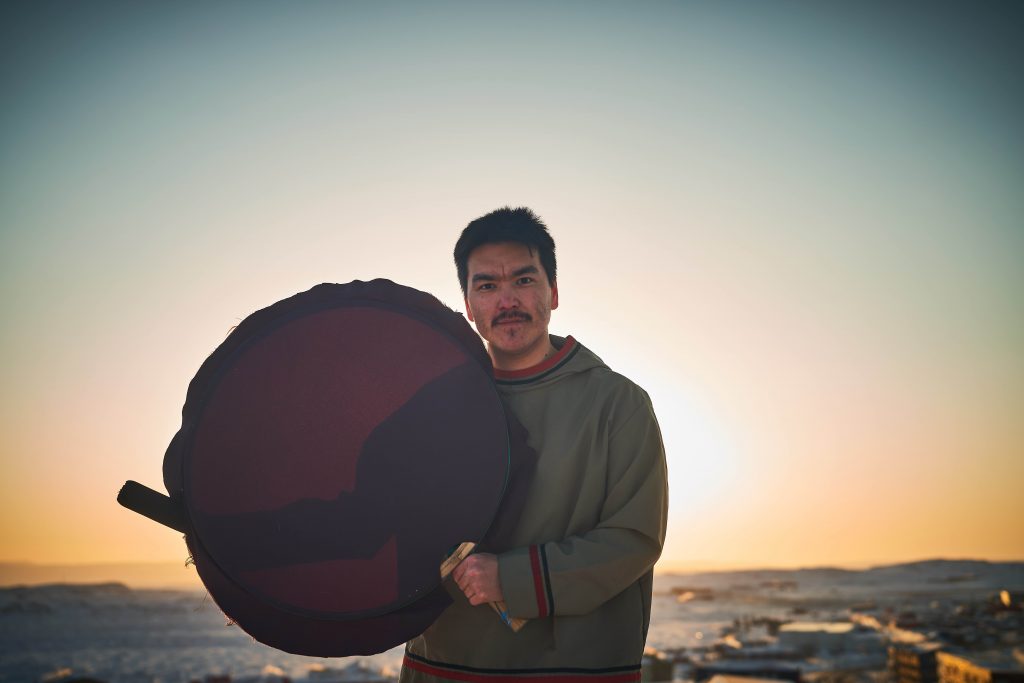
In 2021, Inuit drum dancing and singing was inscribed on UNESCO’s Representative List of the Intangible Cultural Heritage of Humanity. During the festival, participants had the opportunity to meet with the Greenlandic women who undertook the process of inscribing Inuit drum dancing on the list. The success of this endeavour officially “recognized Inuit drum dancing as … an important part of cultural history that needs to be preserved and celebrated,” said Sandi Vincent, a member of Qaggiavuut’s drum dance group.
“There was a nice moment where the Greenlandic participants recognized that the Canadian group had a lot of youth,” said Vincent about the festival. “And they were so happy that so many young people are passionate and continuing with drum dancing. They took a moment to recognize that’s what they want to move forward with – [to] bring drum dancing to younger generations.” She added: “It’s so nice, this relationship Canadian Inuit and Greenlandic Inuit have: it’s where we look up to each other.”
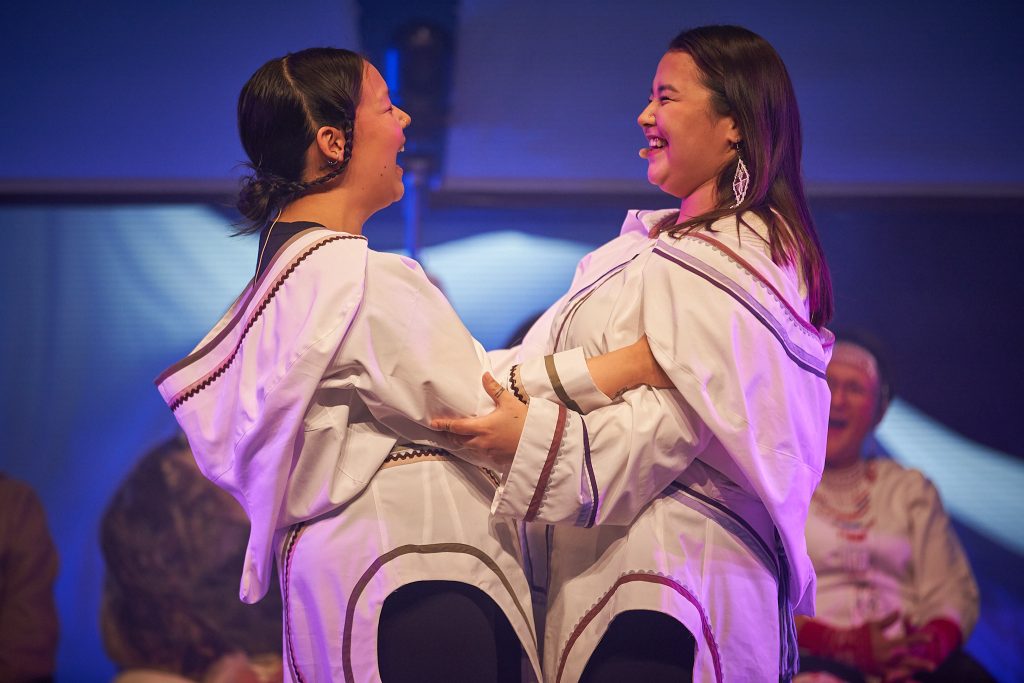
As the festival’s participants all share a common Inuit heritage, there are many similarities in their languages and cultures, like dances and songs.
“As an Inuktitut speaker, I was able to understand [the] dialect [of the other delegations], so that made it much easier for me to co-operate with them,” said Shelton Nipisar, another Qaggiavuut drum dancer from the village of Arviat in the Kivalliq Region of Nunavut. Alongside the similarities, he also noted some differences in how they practise their traditions, like the shape of the drum and the way they dance.
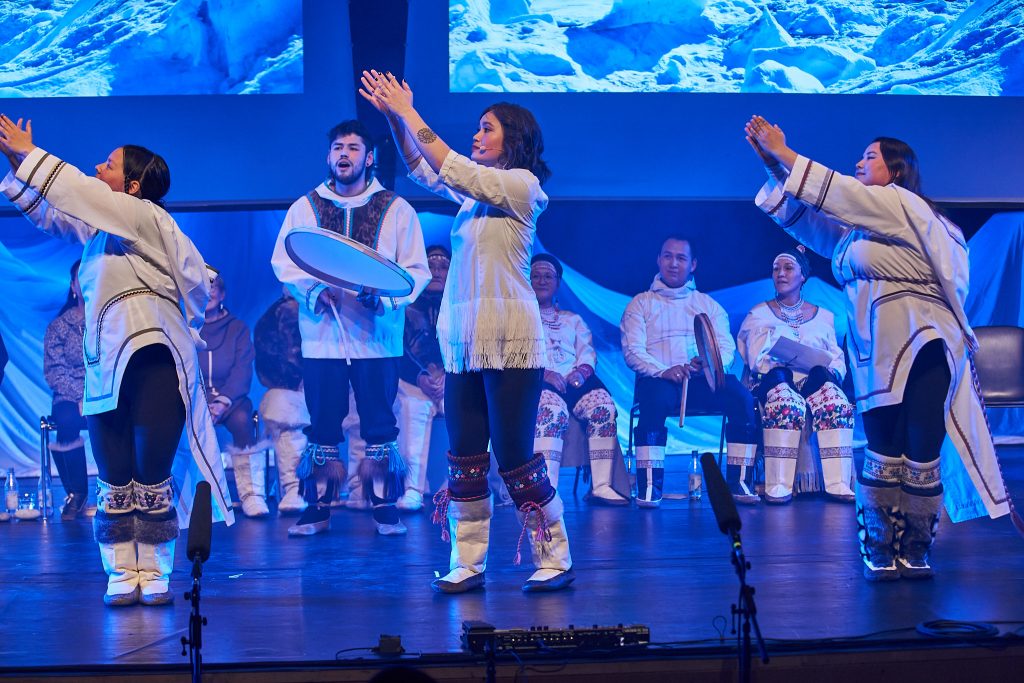
The festival’s participants led workshops about Greenlandic and Canadian drum dancing for each other, where they were able to explore the similarities and differences between the practices and traditions of each region. The Canadian delegation also gave a public workshop on drum dancing and throat singing and danced and sang at pop-up performances throughout Nuuk. The festival culminated in a public performance at the Katuaq venue, where the representatives from each region performed some of their traditional songs and dances and collaborated on some pieces, blending the styles.
Of course, there is variation in the traditional songs and dances even within Nunavut itself. As most members of the Qaggiavuut drum dance group hail from Iqaluit, many of the songs that they brought to the festival were from Nunavut’s Qikiqtaaluk Region.
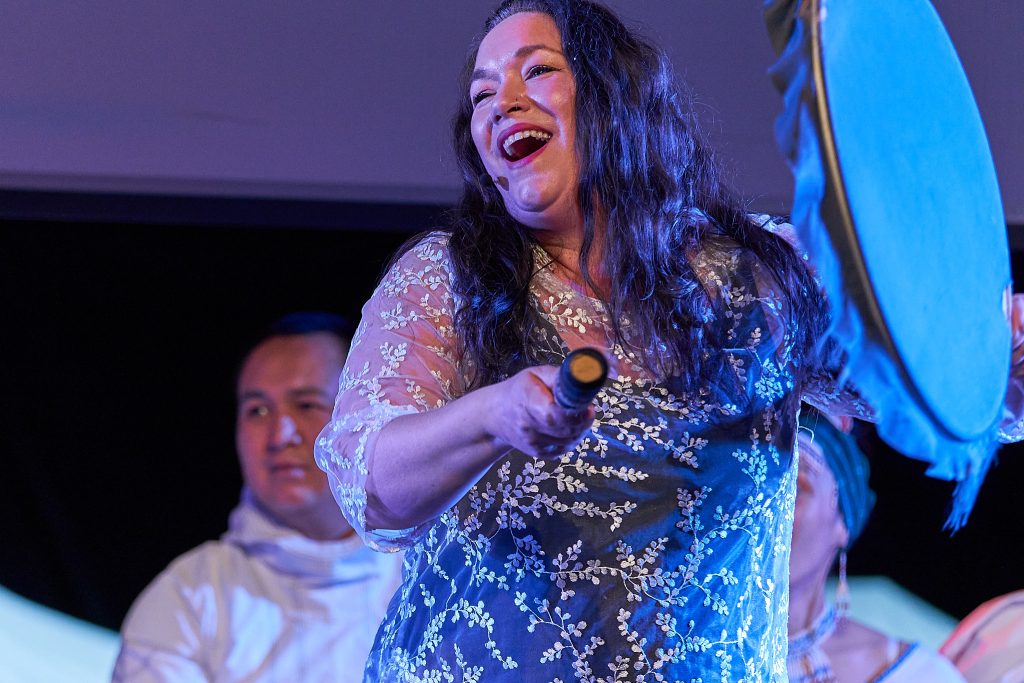
“I would love to share more traditional songs from my hometown region,” said Nipisar. “And I would love to teach those songs … to this crew.”
Looking back on her experience at the festival, one of Vincent’s biggest takeaways was how to work collaboratively, “how to respect and recognize differences while working together with similarities.”
“I love the fact that [Katuaq is] trying to help us preserve our language, culture and heritage with that event. And learning and sharing knowledge about our practices and traditions with each other, it’s been great,” said Nipisar.
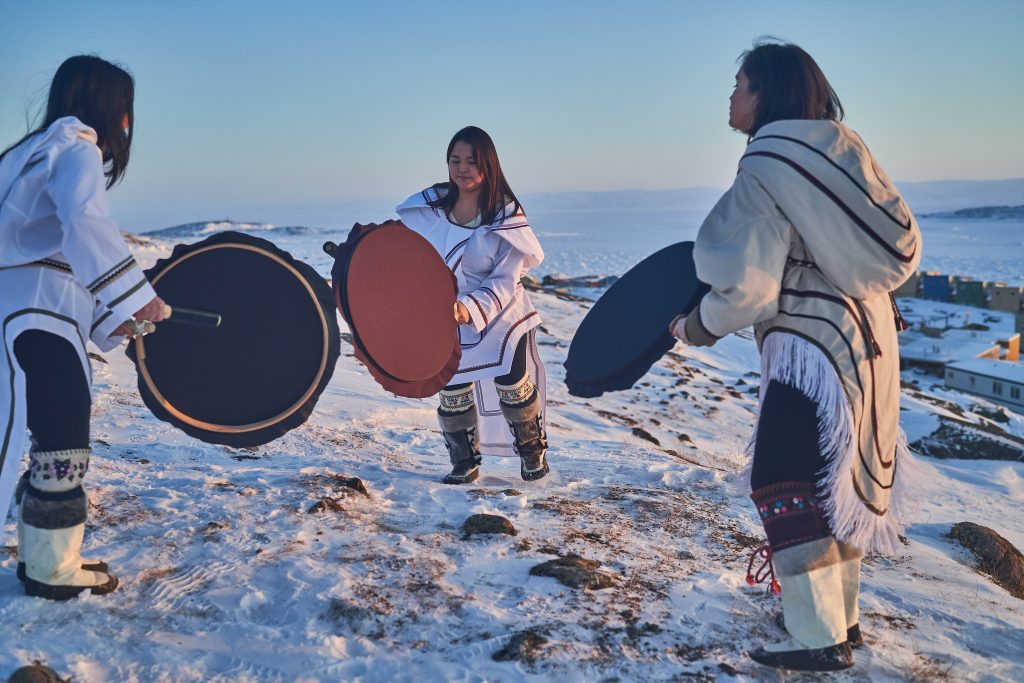
He added later in an email: “It made me realize that I should learn more traditional songs, drum dances and practices … especially from my hometown and my region.… Like learning those practices from Elders who were born out on the land since they are the true knowledge holders.”
“I hope it’s going to become an annual thing so that I’ll be able to gain new skills and experiences to share [this] knowledge [with] my fellow Inuit,” said Nipisar.
Dance Media Group strengthens the dance sector through dialogue. Can you help us sustain national, accessible dance coverage? Your contribution supports writers, illustrators, photographers and dancers as they tell their own stories. Dance Media Group is a charitable non-profit organization publishing The Dance Current in print and online.

Tagged:
